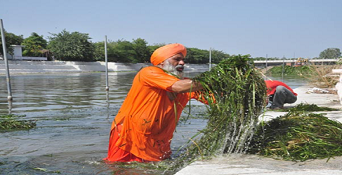Context
Punjab Chief Minister has been admitted to Delhi’s Apollo Hospital, days after he had drunk a glass of water directly from the Kali Bein, a holy rivulet in Sultanpur Lodhi to mark the 22nd anniversary of the cleaning project, which had started on July 16, 2000.
What is the Kali Bein?
- The 165-km rivulet starts from Hoshiarpur, runs across four districts and meets the confluence of the rivers Beas and Sutlej in Kapurthala.
- Along its banks are around 80 villages and half a dozen small and big towns.
- Waste water from there as well as industrial waste used to flow into the rivulet via a drain, turning its waters black, hence the name Kali Bein (black rivulet).
- Dense grass and weeds grew on the water until a cleaning project started.
Historical background
- The Kali Bein is of great significance to Sikh religion and history, because the first Guru, Nanak Dev, is said to have got enlightenment here.
- When Guru Nanak Dev was staying at Sultanpur Lodhi with his sister Bebe Nanki, he would bathe in the Kali Bein.
- He is said to have disappeared into the waters one day, before emerging on the third day.
- The first thing he recited was the “Mool Mantra” of the Sikh religion.

How did the cleaning project start?
- It was started by environmentalist Baba Balbir Singh Seechewal (now AAP Rajya Sabha MP), a former Punjab Pollution Control Board (PPCB) member, with a handful of followers, without government help.
- They removed weeds, treated the water and spread awareness among residents.
- Six years of hard work paid off when then President A P J Abdul Kalam visited the site in 2006 and praised them for their effort.
- The then Congress government in Punjab then announced that it would take up the project to stop the discharge of untreated water into the rivulet.
- The government identified around 73 villages in three districts releasing sewer water into the Kali Bein.
- The project required every village to build a large pond to collect the sewer water, which would be processed in a water treatment plant and the water then used for irrigation.
- The land for the ponds was to be provided by panchayats.
